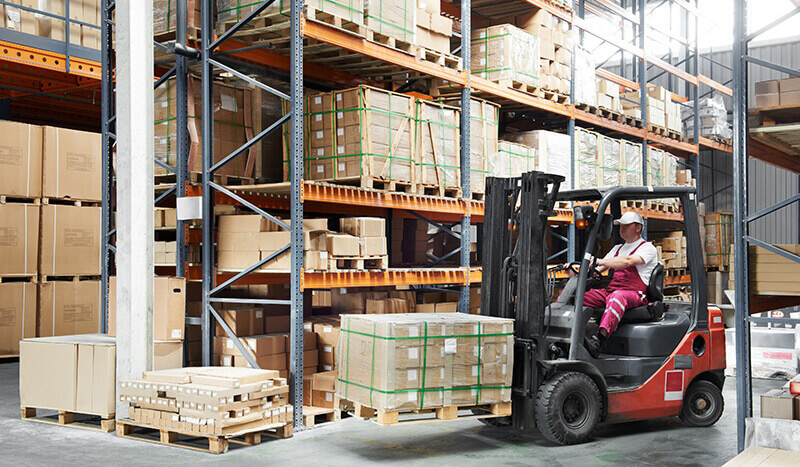
Depot safety is often overlooked when compared to more obviously threatening manufacturing environments, however accidents in logistics centres can prove just as dangerous to employees as incidents on the production floor. This is especially true for lone workers, who are a common sight in such facilities and who are often left far from their colleagues. Furthermore, the impact on the business itself is amplified due to the vital nature of storage sites, meaning that major incidents can result in serious financial losses.
However, with modern technology increasingly taking the lead in many aspects of business, there are a large variety of tools at our disposal in order to improve depot safety. Though this can cause some firms a degree of uncertainty over what products and systems to opt for, there is thankfully a fairly straightforward method for determining the shortcomings and needs of a given facility when it comes to making their depot safe for lone workers.
1 – Properly Assess The Risks
One of the biggest issues when dealing with environments like depots is that they can have a variety of different threats active from day to day. These can range from large vehicles and forklifts, to stacks of heavy pallets, moving machinery like cranes, winches or sorting machines and can have potentially dangerous substances kept in storage. All this is often accompanied by a high ambient noise level, which makes it all the harder to properly maintain situational awareness. They are also large, making it hard for supervisors to actively monitor their staff at all times. With so many potential hazards in play, it can be tough for a company to analyse its plans and processes to identify weak points that may be in need of improvement.
However, a modern computerised alarm system can store the data it gathers on multiple health and safety incidents for later use. When required, this information can be accessed by senior staff in order to easily identify what hazards are proving a hindrance or a danger to their staff. Over time, this evidence can be employed to ensure a steady improvement of procedures and training methods. Furthermore, this information will also provide an audit trail in the event of and investigation into a major incident by the Health and Safety Executive, providing ample proof that workers are properly trained and regulations are followed.
2 – Make Sure Problems Are Dealt With Quickly
Given the variety of threats to employees that can be found in logistics areas, it is imperative that once the alarm is raised by a lone worker, help arrives quickly. Ordinarily, alarms are dealt with by human staff situated in an office or control room, who are required to relay information from the person calling in the emergency to the appropriate response staff. This introduces the possibility for human error to disrupt the process and potentially cost an injured employee their life.
However, by using an automated system, we can eliminate human error from the equation and speed up response times massively. Installing a critical alarm management system software package can ensure that alarms are processed and forwarded to responders to notify them of the situation within seconds. Lone workers are able to now raise an alarm from their smartphone in just a few seconds and include the specific information that their colleagues need to know. Once this is done, the system will send messages to the response staff, notifying them of the emergency and asking them to acknowledge that they are en-route. If no reply is received within a set time limit, then the critical alarm management system can escalate the call to even more senior staff.
3 – Make Communication Easy
In a rapidly changing working environment, staff need a way to easily share important information. This is why the critical alarm management system is often paired with a dedicated app that is installed on workers' smart devices and workstations. Using this app, staff can log and alarm, update it with pertinent information and monitor the situation as it develops. This is ideal for managers who require the clearest and most up to date information possible in order to make a confident decision, as well as the responders themselves, who will have a better picture of the situation they are dealing with. This helps with efficiency as well, as the system can be used to schedule a variety of tasks quite quickly and then relay pertinent data back to other workers. By keeping communications in one centralised hub, it makes it far easier to stay on top of the day to day operations of a facility.
Another key aspect of good communications is making certain that lone workers have suitable equipment for the job they are doing and the environment they are in. As such, many firms opt to issue their staff with work devices that are specially modified to be resistant to direct damage and which are safe to use in hazardous environments such as those where flammable chemicals or sensitive electronics are present. Additionally, to tackle signal blind spots, base stations can be installed around the site, ensuring that the worker always has access to the central system and can notify their colleagues of an emergency quickly.
Specialised quick-use devices (known as MPERS) can also be purchased, which can raise a high-priority alarm at the push of a button and which can also be programmed to call specific numbers so that the worker can talk directly with key individuals. These wearables are made to be both unobtrusive and fast to deploy. The devices can be outfitted with a suite of features to take care for the lone worker themselves, in case they become incapacitated and are unable to call for help. These include sensors that detect falls or sudden loss of movement, as well as trackers that identify if the employee has entered a particularly hazardous zone. In each case, the device will prompt the user to signal that they are fine, and if no response is forthcoming, it will automatically summon help. These devices can be coupled with an alarm system as described above, or can even run on a cloud-based network, making them an easy low-cost augmentation to lone worker safety.
Summary
As we've established, the ability to properly communicate is key to providing a safe environment for lone workers. This means having the right equipment and systems in place in order to quickly and effectively deal with an emergency, especially if a member of staff has been seriously injured. By choosing the appropriate devices for lone workers and then pairing them with a critical alarm management system and dedicated app, these innovations can work in concert to provide a fast, direct and (perhaps most importantly) easy way to log issues.
These systems can also be a great booster for efficiency in everyday tasks too, by applying the same scheduling and notification strategy to day to day operations and tasks that might otherwise fall by the wayside. Managers can therefore have a tool that affords them a huge amount of real-time knowledge about the running of their depot, which can also be used to rapidly deal with emergencies. Furthermore, the data gathered by these software packages can then be used to further improve depot safety as incidents provide solid evidence to fuel change.
ANT has years of experience across a wide array of industries that directly informs the design of all of the above products. This means that modern technology is paired with a wealth of knowledge in order to bring to market a suite of health and safety products that can be customised to meet the needs of virtually any organisation. Furthermore, these systems are designed to seamlessly integrate into a firm's existing infrastructure, making the upgrade as straightforward and unobtrusive as possible and requiring minimal retraining of the lone workers effected. This makes for an extremely fast and simple way in which to provide an environment of better depot safety for lone workers whilst simultaneously giving senior staff a powerful way to directly improve the efficiency of their employees.





